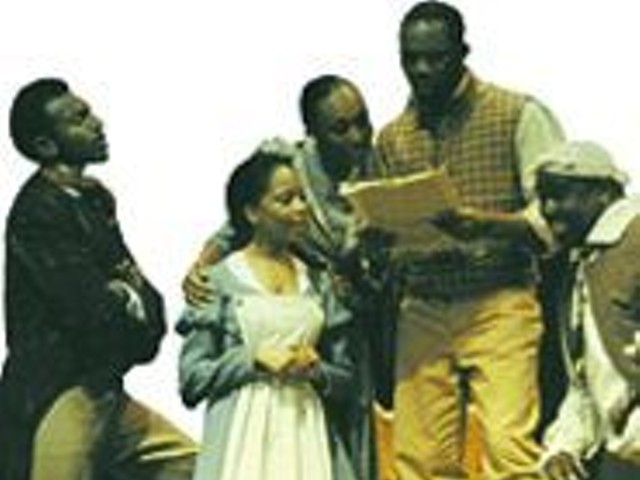Nathan and Sky are matched with two strong women of radically different orientation yet similar conviction. Miss Adelaide, the showgirl/mistress of the Hot Box Club, has been Nathan's too-patient fiancée for the past 14 years, whereas Sarah Brown is an inner-city missionary. When Nathan's about to be hauled away for another vice charge, his gang tells Lt. Brannigan he's mistaken: What looks like another gambling infraction is actually a bachelor party for Nathan's now-imminent nuptials. Meanwhile, because Nathan needs money to rent Joey Biltmore's garage, he bets Sky a grand that he can't spirit the straitlaced Sarah to Havana for a night.
Runyon's characters live during one of the most historically seductive eras of New York -- a time when the hits on Broadway had tunes and everything from trouser creases to wisecracks were sharp. At The New Yorker, his colleagues Joseph Mitchell and A.J. Liebling were documenting the lives of similar urban denizens, yet Runyon's crowd is cartoonishly impassioned and thoroughly appealing. They were a perfect match for Loesser, who was an experienced music man in Hollywood in the late '40s, one of the rare birds who could write words and music for a variety of voices and characters. As standards, his material is more jazzy and intricate, designed for those who enunciate as much as sustain a note. And G&D has stellar numbers for everyone, from Adelaide's petulant "Take Back Your Mink," to Sky's "Luck Be a Lady," to Sarah's "If I Were a Bell."
What was astonishing about the production of Guys and Dolls presented by the Conservatory of Theatre Arts wasn't just how wonderfully these students sang or danced or acted but how confidently they inhabited these roisterers. These young actors had every detail in place, from the mincing walk of the chorines to the swagger of the gamblers. (And after a season of wobbly Brit-Celtic accents on the Loretto-Hilton Center's Mainstage -- by Equity actors, Lord help us -- it was a small miracle to hear such comprehensible and authentic Noo Yawk accents from mere undergrads.) Director Jerry Yoder kept the pace moving and had his youthful cast intelligently use the space, which was smartly spare. The scenery design (a series of smaller sets denoting the Hot Box and the Mission) by Chris Peters was useful without being obtrusive; his masterwork was the sewer scene for the "Luck" number, when "pipes" unfurled from the flies. But the real color came from Jay Heiserman's costumes -- splashy tropical-fruit zoot suits for the guys and peplumed straight skirts for the dolls.
But back to those details. James Andrew Butz's Nathan Detroit and Meghan Brown's Miss Adelaide were a comically moving pair, each of them drooping with disappointment at signs of the other's iniquity. "Sue Me," their duet about the assumed risks of love, was beautifully rendered by Butz's hoarse wail and Brown's falsetto squeak. Eddie Pendergraft's Sky and Jennifer Wintzer's Sarah were warm and watchable and convincing in their "growth" (Sarah must loosen up, and Sky needs to raise the stakes, as it were, on his own life). Supporting roles were all superbly played, from Stephan Stubbins' energetic Nicely-Nicely (he's got Jimmy Cagney's energy with Jolson's booming projection) to Kathleen Sullivan's stern General Cartright. Alas, the only deficiency in this stellar production was the musical accompaniment, conducted by percussionist John Brophy. This was dominated by too-modern keyboard effects and some odd tempo choices (is "Take Back Your Mink" supposed to be that legato?). And no strings. Was it the size of the pit? A poor excuse for not giving these frankly wonderful collegiate performers adequate backing. Otherwise, this cast hit the jackpot, and then some.





